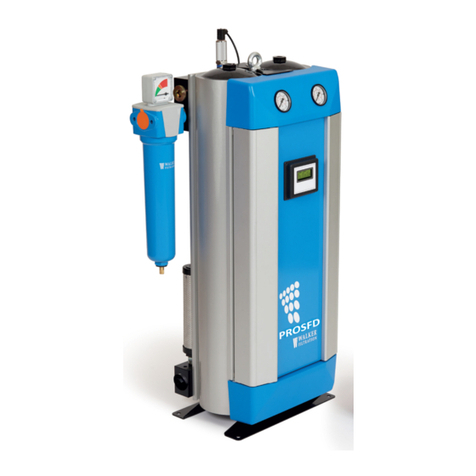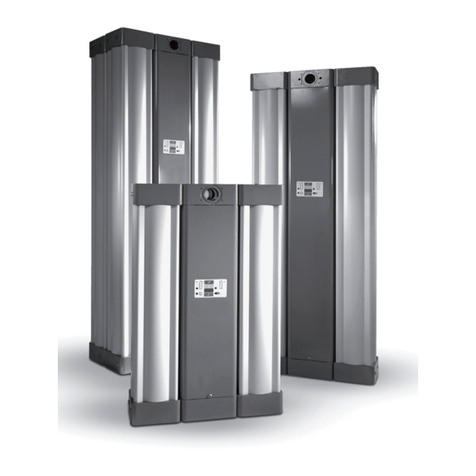Instruction & Technical Manual | 5
The following safety guidelines must be strictly observed:
• Leave this manual at the place of installation of the product.
• It is essential that only Walker Filtration or their appointed agents carry out
maintenance and servicing work.
• Users, maintenance and servicing personnel must be familiar with:
• accident prevention regulations
• safety information (general and specific to the unit)
• safety devices of the unit
• measures to be taken in case of emergency
• Allow only suitably trained persons to be involved with installation, start-up,
operation, servicing and maintenance of the product.
• It is the responsibility of the installer to ensure that the pipe work to and from the
dryer is suitable, in accordance with applicable legislation and subject to inspection
and testing prior to being put into service. All piping must be adequately supported.
• Before carrying out any maintenance or servicing work the unit must be taken out of
operation. Users and others will be exposed to risk if work is carried out whilst the
unit is running. This means electrical disconnection plus isolation from the
compressed air supply and full depressurisation.
• Only trained and competent persons familiar with the electrical requirements of the
unit as laid out in this manual and electrical safety rules and regulations
should be allowed to carry out work on the electrical components and power supply
to the unit.
• When carrying out any work on the unit, use only correctly sized appropriate tools in
good condition.
• Only use original spare parts and accessories from the manufacturer. There is no
guarantee that non-original parts have been designed and manufactured to meeting
the safety and operational requirements of the unit. Walker Filtration assume no
liability for any equipment malfunction resulting from the use of non-approved parts.
• If carrying out installation work above head height, use suitable and safe working
platforms or other means of working access.
• Do not make any constructional changes to the product. Any changes or
modifications may only be carried out by the manufacturer, Walker Filtration.
• Any faults or defects that could affect safety must be put right fully before using the
unit.
• Used items and materials must be disposed of in the correct manner, complying with
local laws and regulations, in particular the desiccant cartridge.





























